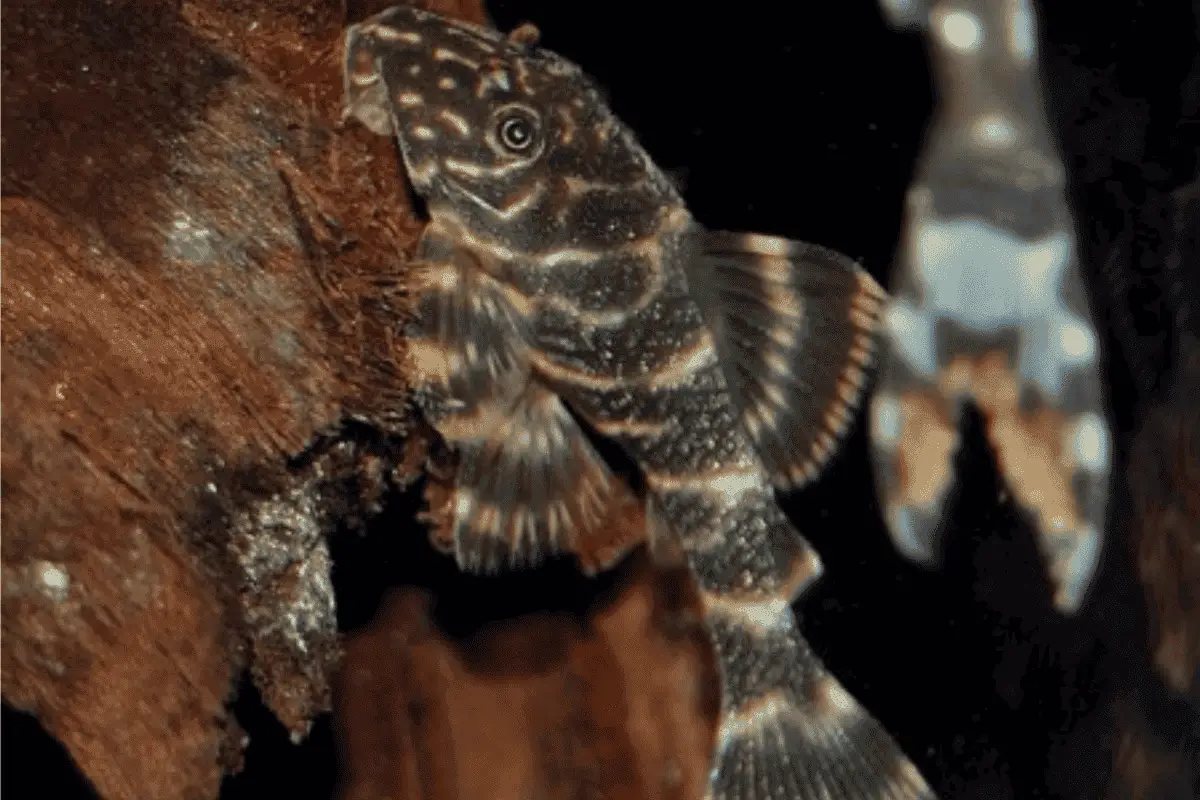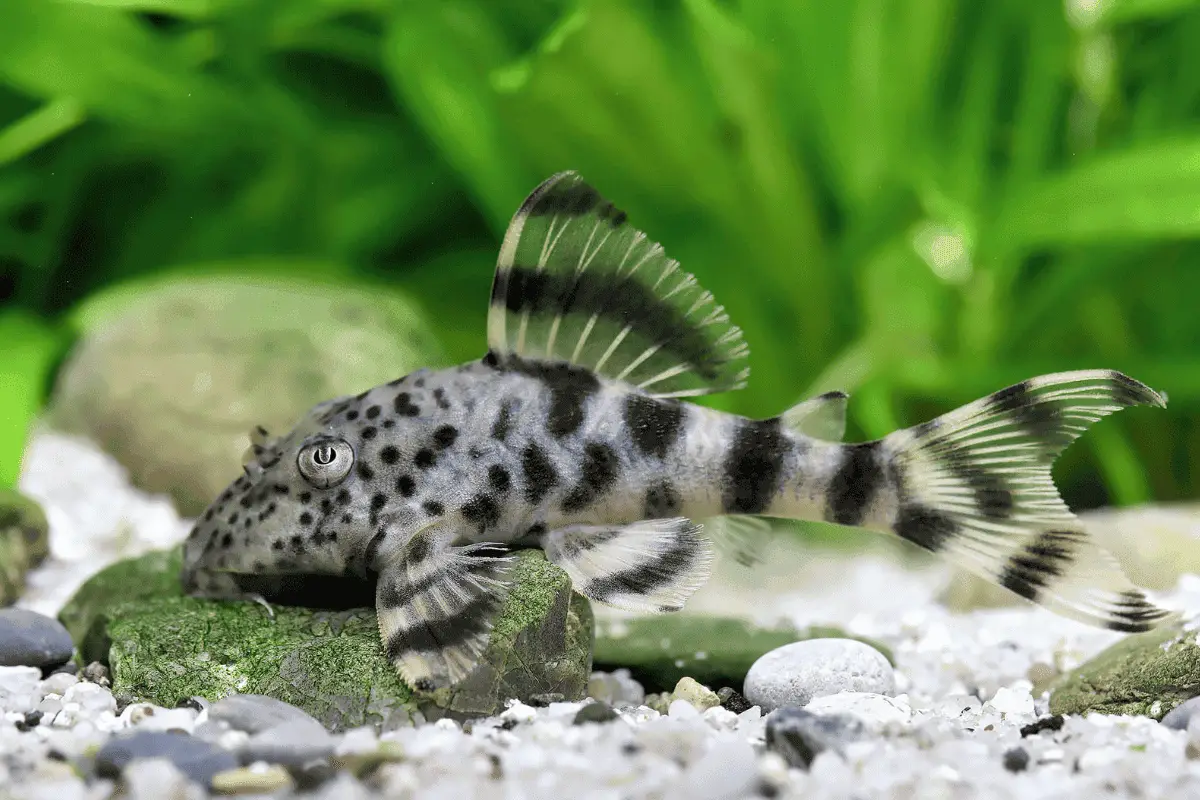Taking care of Pleco fish is pretty straightforward, as they are mostly peaceful and not demanding.
But what about heaters? Do Plecos need anything special? Can they do okay without one? Can you keep them in cooler water, maybe even outside?
Since these are common questions, I’ve decided to write a whole article about it. Let’s dive right in.

Do Plecos Need A Heater?
Yes, Plecos do need a heater. Not all species of Plecos require the same temperature, but most benefit from a stable, warm environment.
- Natural Habitat: Plecos originate from warm, tropical rivers in South America, where the water temperature remains relatively constant and warm.
- Temperature Range: Most Plecos thrive in temperatures between 74°F to 79°F (23°C to 26°C), and a heater helps maintain this consistent range in a home aquarium.
- Health Concerns: Plecos kept in cooler temperatures than they are accustomed to can suffer from slowed metabolism, making them susceptible to diseases and infections.
- Activity Levels: At optimal temperatures, Plecos are more active, display better coloration, and exhibit natural behaviors. When the water is too cold, they can become lethargic.
- Breeding Success: For aquarists looking to breed Plecos, maintaining the appropriate temperature is vital for encouraging breeding behaviors and ensuring the survival of the offspring.
Also Read: Pleco Fish Tank Setup
What Is The Ideal Water Temperature For Plecos?
The ideal water temperature for Plecos largely depends on their specific species, but generally, most thrive between 74°F to 79°F (23°C to 26°C).
Maintaining this temperature range ensures their health, comfort, and active behavior.
- Species Variability: While the common Pleco prefers temperatures between 74°F to 79°F, some Plecos, like the zebra Pleco, might prefer slightly warmer conditions closer to 80°F.
- Metabolic Efficiency: At their ideal temperature range, Plecos’ metabolic processes function optimally, ensuring they digest food properly and obtain necessary nutrients.
- Stress Reduction: Fluctuations or temperatures outside the optimal range can stress Plecos, potentially weakening their immune system and making them susceptible to diseases.
- Color Vibrancy and Behavior: Plecos kept at their preferred temperature often display vibrant colors and are more active, showing off their natural behaviors.
- Lifespan and Breeding: Maintaining the ideal temperature not only ensures a longer and healthier life for Plecos but also encourages successful breeding and the well-being of the fry.
Here’s a quick roundup of the temperature requirements of different plecos:
- Common Pleco (Hypostomus plecostomus): 74°F to 80°F (23°C to 27°C).
- Bristlenose Pleco (Ancistrus spp.): 72°F to 79°F (22°C to 26°C).
- Zebra Pleco (Hypancistrus zebra): 78°F to 86°F (26°C to 30°C).
- Clown Pleco (Panaqolus maccus): 75°F to 82°F (24°C to 28°C).
- Gold Nugget Pleco (Baryancistrus xanthellus): 77°F to 86°F (25°C to 30°C).
- Royal Pleco (Panaque nigrolineatus): 72°F to 78°F (22°C to 26°C).
- Snowball Pleco (Hypancistrus inspector): 73°F to 79°F (23°C to 26°C).
Also Read: Plecos Water Parameters

Choosing the Right Heater Power for Your Plecos
Choosing the right heater power for your Plecos involves assessing the size of your aquarium and the temperature difference between room temperature and the desired water temperature.
A correctly powered heater ensures the comfort and health of your Plecos without overstraining the equipment.
- General Guideline: Typically, aquarists use a ratio of 3-5 watts per gallon. For instance, a 20-gallon tank housing Plecos would need a heater between 60 to 100 watts.
- Room Temperature Factor: If your room temperature is significantly below the Plecos’ ideal range, you might lean towards the higher wattage recommendation to achieve the necessary warmth.
- Tank Size and Distribution: Larger tanks, especially those housing multiple Plecos, may benefit from multiple lower-wattage heaters placed at different locations for even heat distribution.
- Safety First: Overpowered heaters can rapidly change water temperatures, causing stress to Plecos. Ensure the heater has a thermostat to prevent overheating.
- Heater Types: For Plecos, submersible heaters are often recommended due to their efficiency and ability to maintain a stable temperature, ensuring a suitable environment for these tropical fish.

Below is a table showcasing common aquarium sizes and the recommended heater power for each, considering the typical ratio of 3-5 watts per gallon:
| Aquarium Size | Heater Power |
| 5 gallons | 15 – 25 watts |
| 10 gallons | 30 – 50 watts |
| 20 gallons | 60 – 100 watts |
| 30 gallons | 90 – 150 watts |
| 40 gallons | 120 – 200 watts |
| 55 gallons | 165 – 275 watts |
Four Heater Types for Plecos
When choosing a heater for your Plecos, you generally have four available options:
1. Filter Heaters
Filter heaters integrate the heater into the aquarium’s filtration system, heating the water as it’s filtered.
This type of heater provides even heating throughout the tank, making it suitable for Plecos that require consistent temperatures.
- Even Distribution: As water passes through the filter, it gets heated, ensuring a uniform temperature across the entire aquarium, beneficial for Plecos.
- Safety: With filter heaters, there’s less risk of direct contact between Plecos and the heater, reducing the chance of accidental burns.
- Space-saving: Incorporating the heater into the filter means one less piece of equipment inside the tank, maximizing space for Plecos to roam.
- Maintenance: While the heater is part of the filter system, its cleaning and maintenance might be a tad trickier.
2. Substrate Heaters
Placed under the aquarium’s substrate, usually as heating cables, these heaters boost plant growth and offer foundational heating, beneficial for Plecos.
- Plant Growth: They can boost plant growth, offering Plecos a more natural setting.
- Natural Water Movement: They create natural water flow by making the warm water rise, resembling the conditions Plecos find in the wild.
- Aesthetic Appeal: Tucked under the substrate, these heaters maintain the visual charm of your aquarium.
- Limited Heating: By themselves, they might not suffice in colder conditions and might need another heater to give Plecos the right temperature.

3. Submersible Heaters
Fully immersed in water, these heaters are quite common and ensure reliable heating for Plecos.
- Effective Heating: Renowned for their quick and efficient heating, they’re perfect for Plecos.
- Placement Flexibility: They can be set either horizontally or vertically, offering versatile placement to guarantee even heating for Plecos’ comfort.
- Visibility: Positioned inside, they might slightly disrupt the tank’s look unless hidden by decor.
- Safety Measures: It’s crucial to keep a safe distance between the heater and any items, including Plecos, to avoid burns upon contact.
4. Hang-On Heaters
Partially submerged, a segment of this heater dangles outside the tank. They’re relatively simple to set up and look after.
- Easy Access: The controls, often found on the external section, make for hassle-free adjustments without bothering Plecos.
- Efficiency: These heaters tend to be less efficient than the submerged kinds, so keeping an eye out for Plecos’ well-being is essential.
- Visibility: As they hang off the tank’s edge, they might be more visible, impacting the tank’s overall look.
- Safety Concerns: It’s critical to install them correctly to stop water from reaching the electric components, protecting both Plecos and the aquarist.
My Top Pick
I personally selected the Fluval E300 Advanced Electronic Heater (link to Amazon) for my Pleco fish tank. Here’s why:
- Its digital temperature display provides immediate feedback and makes adjusting the temperature easy.
- As it can be completely submerged, it ensures consistent and effective heating throughout the tank.
- It features dual temperature sensors for accurate water temperature readings.
- Fluval is a reputable brand known for its high-quality aquarium solutions.
Can Plecos Handle Cold Waters?
Plecos aren’t naturally suited for cold waters. While they can endure slight temperature drops briefly, persistent cold can cause severe health problems and even death.
- Tropical Beginnings: Plecos come from warm, tropical rivers in South America, showing their preference for warmer settings.
- Slowed Metabolism: Cold waters reduce the metabolism of Plecos, which lessens their appetite and activity.
- Stress Factors: Quick or extended cold exposure stresses Plecos, making them prone to illness and infections.
- Shortened Life: Living in cold waters reduces Plecos’ lifespan since it’s not their natural setting.
Can Plecos Live Outdoors?
Plecos can stay outdoors, but specific conditions must be met to mimic their native tropical surroundings.
However, in colder areas or places with varying temperatures, an outdoor life can harm their health.
- Temperature Control: Outdoor ponds or tanks need a consistent heating system, especially during colder times, to keep Plecos comfortable.
- Defending from Predators: Being outdoors makes Plecos vulnerable to predators like birds; protection is key.
- Water Purity: Outdoor waters can contain more pollutants, so monitoring water quality is vital for Plecos’ health.
- Seasonal Considerations: In regions with colder climates, it may be necessary to bring Plecos indoors or maintain stable outdoor water temperatures.
- Mimicking Nature: Outdoor ponds give Plecos a familiar setting, with live plants and more space, enhancing their health.
Also Read: 11 Plants Your Plecos Will Love In Their Tank

Impact of Extremely Warm Water on Plecos
Plecos exposed to extremely warm water experience significant physiological stress, which adversely affects their overall health and behavior. Here’s what you should know:
- Oxygen Shortage: Warmer water retains less dissolved oxygen, posing respiratory challenges and potentially causing suffocation for Plecos.
- Accelerated Metabolism: High temperatures lead to a faster metabolism in Plecos, which can result in quicker energy depletion and a heightened need for food.
- Heightened Disease Susceptibility: The stress from extreme warmth can weaken Plecos’ immune systems, making them more vulnerable to diseases, infections, and other health issues.
Conclusions
For those of you in a rush, here’s a short summary:
- Plecos require heaters to maintain a stable, warm environment, mirroring their natural habitat in warm South American rivers.
- Most Plecos thrive in temperatures between 74°F to 79°F (23°C to 26°C), with slight variations among species for optimal health and activity.
- When selecting a heater, consider factors like tank size, room temperature, and heater type to ensure the comfort and safety of Plecos.
- Four heater types are available: filter, substrate, submersible, and hang-on heaters, each with its advantages and considerations for Pleco care.
- Proper temperature management is vital to prevent stress, diseases, and mortality in Plecos, whether due to extreme heat or cold, sudden temperature changes, or equipment malfunctions.
